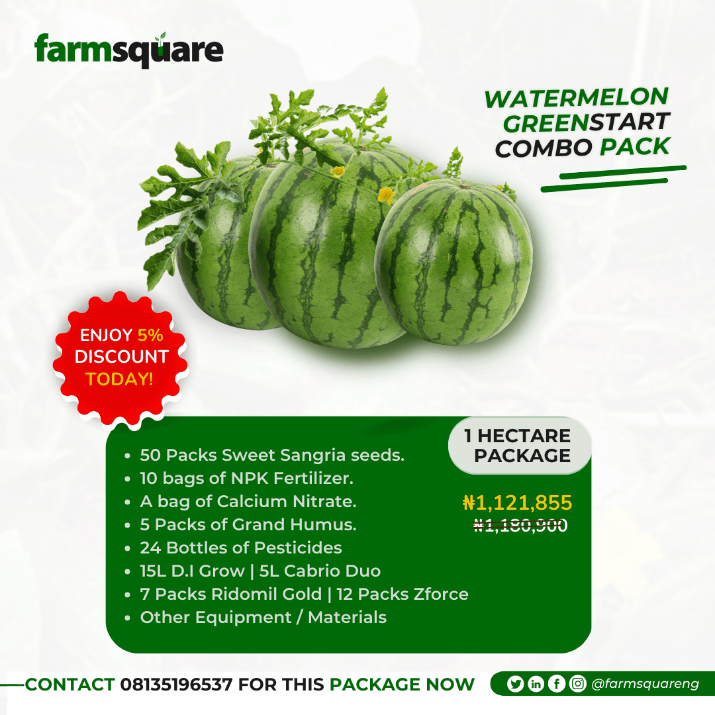Watermelon farming is a profitable agricultural venture in Nigeria due to the high demand for its fruit in the country. Growing high-quality watermelons requires proper inputs, including the right variety, good soil, adequate water, and pest management. Here are essential inputs for successful watermelon farming in Nigeria:
- Variety Selection: Choose the right variety of watermelon that is suitable for the local climate and soil conditions. Some popular varieties in Nigeria are Kaolack, Maridadi F1, Sugar Baby, and Elghali F1
- Soil Preparation: Prepare the soil by clearing the land and removing any weeds or debris. The soil should be well-drained, fertile, and rich in organic matter. It is advisable to conduct a soil test to determine the pH and nutrient content of the soil. The ideal pH range for watermelon farming is between 6.0 and 7.0.
- Seed Preparation: Soak the watermelon seeds in warm water for 24 to 48 hours before planting to enhance germination. You can also apply a fungicide to the seeds to protect them from fungal diseases.
- Planting: Plant the seeds in well-spaced rows, leaving a distance of 2 to 3 feet between plants and 6 to 8 feet between rows. Plant the seeds about 1 inch deep in the soil.
- Watering: Watermelon plants require regular watering to thrive. Provide them with adequate water, especially during the flowering and fruiting stages. Irrigate the plants deeply and regularly, but avoid waterlogging the soil.
- Fertilization: Apply organic or inorganic fertilizers to the soil to boost plant growth and fruit development. Apply fertilizers according to the soil test results or as recommended by the fertilizer manufacturer.
- Pest Management: Control pests and diseases using natural or chemical methods. Common pests that attack watermelon plants in Nigeria include aphids, whiteflies, and spider mites. You can use insecticides or organic control methods such as neem oil or soap solutions to manage pests.
- Harvesting: Harvest watermelons when they are ripe and fully mature. Signs of ripeness include a yellow or brown coloration of the underside of the fruit, a dull sound when tapped, and a dry stem.
 Greenhouses
Greenhouses























Reviews
Clear filtersThere are no reviews yet.